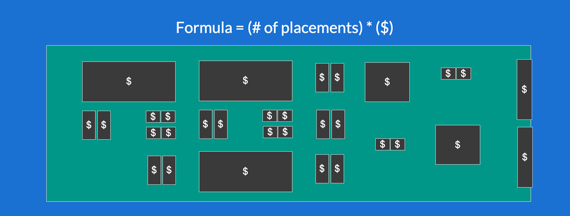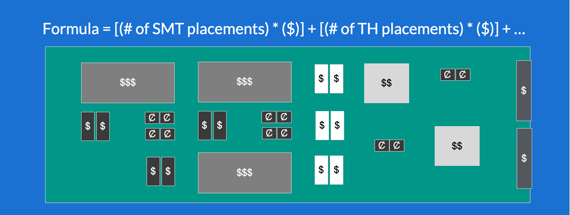At CalcuQuote, we have worked with more than 200 Electronics Manufacturing Services (EMS) companies to improve their RFQ process. We like to say that we’ve see it all. Well, maybe not all, but enough to learn a thing or two.
When discussing labor cost modeling in the EMS industry, we often get the question, “What’s the secret to an accurate labor model?” The secret is, there is no secret. Parameters such as labor rate and standard time may vary from company to company, but most EMS companies fall into one of five labor quoting methods.
Look and Guess
The “Look and Guess” method is just that, look and guess. A customer can send assembly documentation and it is reviewed to identify the cost. This method is most commonly used in companies where there are experts with years of experience. Typically, this individual(s) are owners/previous owners of EMS companies and understand the nuances, are well in tune with production capabilities, and can make an executive decision.
While it is an effective method and can work with accuracy, it is difficult to document and is not easily replicated.
Consistency is also rare. Here is a test: gather a group of individuals with 20+ years of experience or more, give them the same assembly documentation and have them identify the cost of the job. The likelihood that all come up with the number is low because precision decreases.
However, the “Look and Guess” method is much more holistic and simple.
BOM Cost Plus
Compared to the “Look and Guess” method, “BOM Cost Plus” begins to take into consideration calculations to decide labor cost. This method will identify the total material dollars and apply a materials markup to identify the labor cost. Materials markup is important to account for the risk of purchasing materials. However, this approach encompasses not only material markup but also overhead and labor all in one.
The markup for “BOM Cost Plus” is also typically adjusted based on the type of board. Similar to the “Look and Guess” method, “BOM Cost Plus” usually requires an individual with experience to decide when and when not to increase or decrease the markup value based on the board. The completion of this method does require that all components on the BOM are costed.

BOM Cost Plus
Price per Part
“Price per Part” method identifies the total number of placements on a board and applies an arbitrary measure of what the dollar value should be per component. A slightly more sophisticated than“BOM Cost Plus”.
There has been a significant amount of progress with the modernization and automation of the EMS industry which this method does not take into consideration with the varying costs for setup and variable. Results of this method usually result in high quantities being overpriced and lower quantities being under priced due to higher setup costs and lower variable costs.

Price per Classified Part
Formula = (# of component placements) * ($) + (# of component placements) * ($) + etc.
As we move into the “Price per Classified Part” method, it becomes much more process oriented. Similar to “Price per Part”, this method associates a dollar value with specific classifications of components. As an example, for BGA components a different dollar value would be applied compared to SMT Simple components.
There are still some variation on costs when higher quantities are quoted. However, typically price breaks are identified to account for more accurate costs.

Activity Costing
“Activity Based Costing” identifies each activity included after a job is won and can include everything from Purchasing, Receiving, AOI, and more. Each activity is assigned a driver, standard time and dollar rate. Labor rates can be burdened shop rates to account for overhead or direct labor rates for each activity where overhead is allocated outside of labor rates.
Using this model to identify activities in a job will also allow to identify assembly routing that can be passed on to production.
This method provides more advanced processes and is typically handled in a spreadsheet or other standardized form.
The “Activity Based Costing” method is better suited for a company that has a larger amount of quote volume and a number of individuals that can complete a labor quote. Identifying the activities in this method creates comprehension and understanding.
Overall, this method is a more accurate reflection of baseline costs.

Activity Costing




